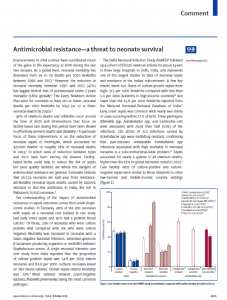
Improvements in child survival have contributed much of the gains in life expectancy at birth during the last two decades. At a global level, neonatal mortality has decreased from 36 to 19 deaths per 1000 livebirths between 1990 and 2012. However, the reduction in neonatal mortality between 1990 and 2015 (47%) has lagged behind that of postneonatal under-5 years mortality (58%) globally.2 The Every Newborn Action Plan aims for countries to have ten or fewer neonatal deaths per 1000 livebirths by 2035 (or 12 or fewer neonatal deaths by 2030).
40% of newborn deaths and stillbirths occur around the time of birth and interventions that focus on facility-based care during this period have been shown to effectively prevent deaths and disability.A particular focus of these interventions is on the reduction of neonatal sepsis or meningitis, which accounted for 421 000 deathsor roughly 16% of neonatal deaths in 2013,5 in which rates of reduction between 1990 and 2012 have been among the slowest. Facility-based births could help to reduce the risk of sepsis but poor quality facilities are where the dangers of antimicrobial resistance are greatest. Estimates indicate that 56 524 neonates die each year from resistance-attributable neonatal sepsis deaths caused by bacteria resistant to first-line antibiotics in India; the toll in Pakistan is 25 692 neonates.